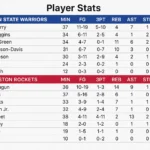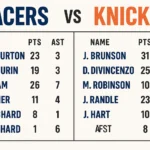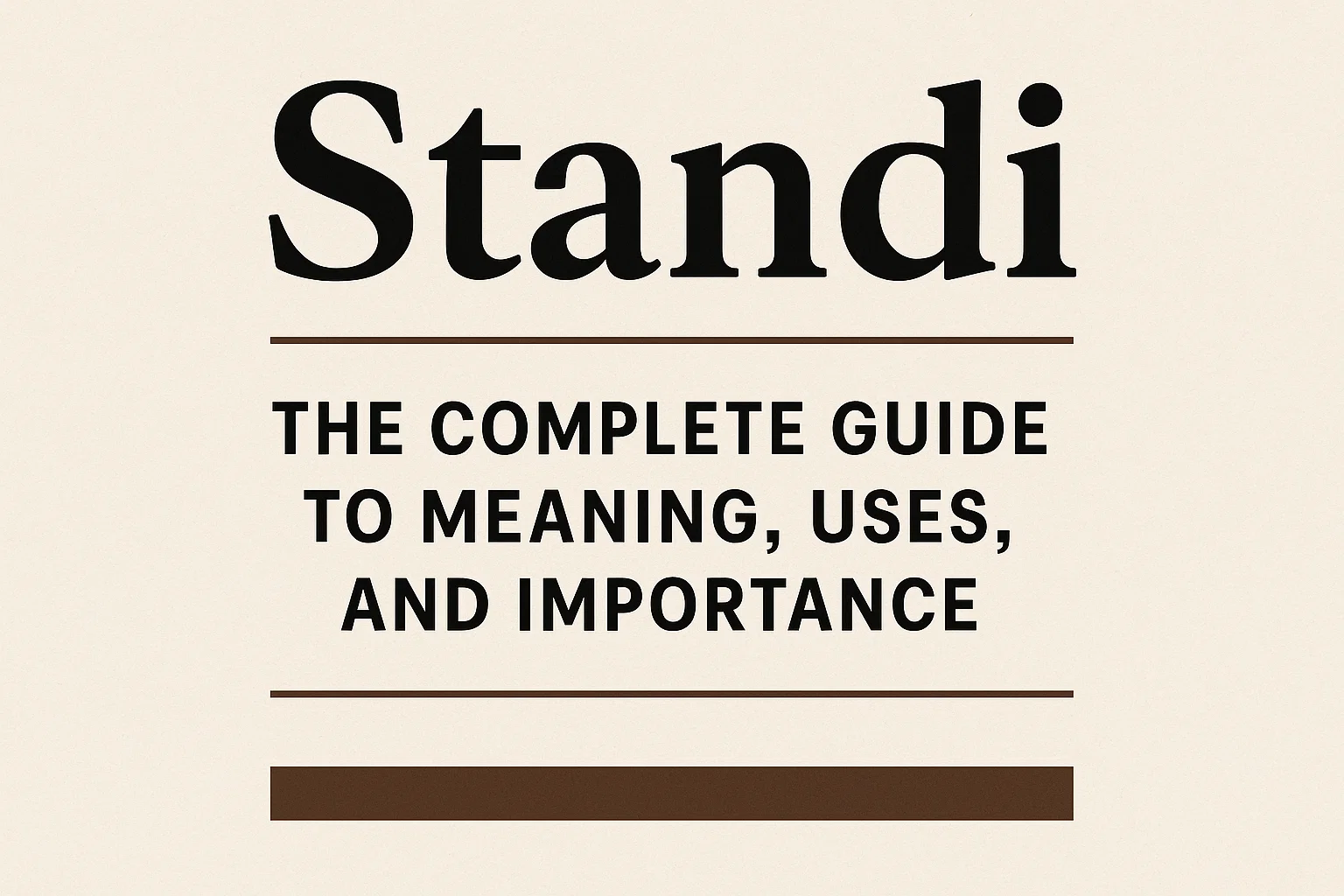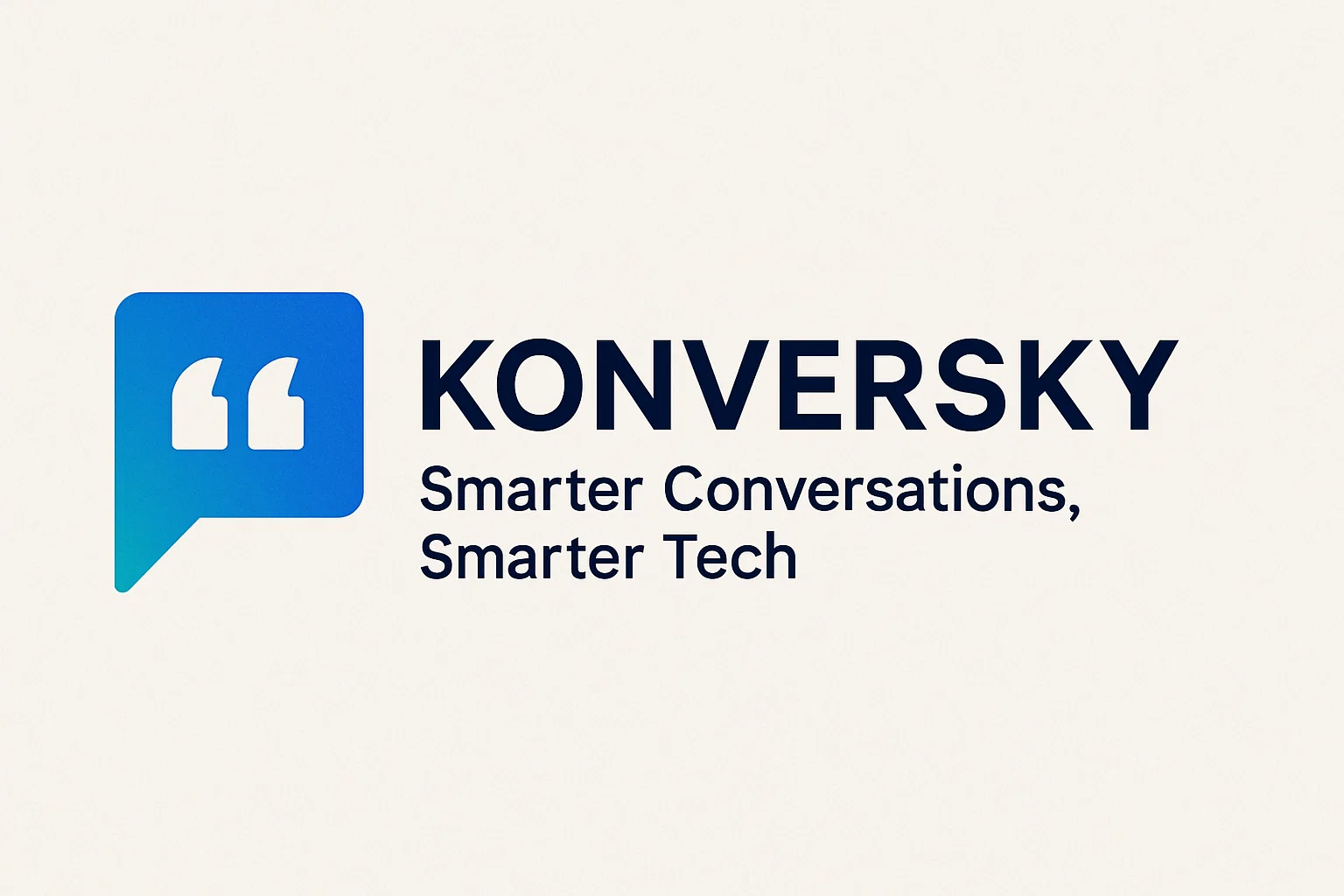Introduction to Standi
The word standi may appear simple, but it carries a wide range of meanings and practical uses in different fields such as advertising, education, business, events, and even everyday communication. At its core, standi refers to a standee or display stand, usually made from cardboard, acrylic, wood, or other materials, designed to attract attention, deliver information, or promote something. Over time, the concept of standi has evolved from a basic promotional tool into a multi-purpose medium that plays a key role in branding, marketing, and presentation.
Read more: Kirk Gerndt: A Comprehensive Look at Life, Career, and Legacy
What is a Standi?
A standi is typically a free-standing display, often printed with graphics, images, or messages, meant to capture the attention of viewers. Standis are widely used for advertising products, announcing events, providing directions, or presenting information.
Unlike digital displays, standis are physical and tangible, offering a different kind of engagement with audiences. They are strategically placed in areas where visibility is high, such as shopping malls, trade shows, schools, offices, restaurants, and theaters.
The Origins of Standi
The origins of standi can be traced back to traditional poster displays. In early advertising, posters and banners were pasted on walls or boards. Over time, the need for portable, reusable, and eye-catching displays gave rise to the concept of standis. Initially made from wood or metal, modern standis are often created using lightweight yet durable materials like corrugated board, foam, acrylic sheets, or fabric.
Types of Standi
There are multiple types of standi, each serving a unique purpose. Let’s explore the major categories:
1. Advertising Standi
These are the most common and widely recognized. They are placed in retail stores, malls, and events to showcase new products, promotions, or seasonal offers.
2. Event Standi
Designed for conferences, seminars, weddings, or cultural programs, event standis display schedules, guest information, or event themes.
3. Educational Standi
Schools and universities use standis to present important notices, timetables, or motivational messages for students.
4. Corporate Standis
Companies use standis in offices or exhibitions to highlight achievements, services, or branding initiatives.
5. Directional Standis
These standis serve practical purposes, guiding people toward entrances, exits, halls, or registration desks.
6. Interactive Standis
Some modern standis include QR codes, digital screens, or cut-out spaces where people can pose for photos, making them more engaging.
Benefits of Using Standis
- Cost-Effective Promotion
Printing a standi is relatively affordable compared to digital advertising. - High Visibility
With the right design and placement, a standi easily grabs attention. - Customizable
Businesses and individuals can design standis according to themes, events, or campaigns. - Portable and Lightweight
Most standis are easy to move and install. - Versatile Applications
They work across industries—from retail to education to entertainment.
Materials Used in Standi
The material chosen for a standi determines its durability and appearance. Common materials include:
- Cardboard – Lightweight and economical for short-term use.
- Foam Board – Provides sturdiness with a polished look.
- Acrylic – Sleek, durable, and suitable for long-term usage.
- PVC Flex – Popular for outdoor displays.
- Metal and Wood – Strong, premium options for permanent installations.
Designing an Effective Standi
The effectiveness of a standi lies in its design. Here are some design tips:
- Bold Typography – Use fonts that are readable from a distance.
- Eye-Catching Colors – Vibrant colors attract attention quickly.
- Clear Messaging – Keep the text short and impactful.
- High-Quality Images – Graphics must be crisp and professional.
- Proper Sizing – Match the standi’s size with the venue’s space.
- Call-to-Action (CTA) – Encourage viewers to act, such as “Visit Now” or “Register Here.”
Applications of Standi in Different Industries
1. Retail Sector
Retailers rely on standis to announce sales, discounts, or new arrivals. For example, a supermarket might place a standi at the entrance to inform shoppers about daily deals.
2. Hospitality Industry
Hotels and restaurants use standis to promote menus, offers, or events. A restaurant might showcase a standi with a “Weekend Buffet Special.”
3. Education
Schools, colleges, and training institutes use standis to highlight programs, admission dates, or achievements.
4. Healthcare
Hospitals and clinics display standis with health awareness messages, vaccination schedules, or directions.
5. Entertainment Industry
Movie theaters often use life-size standis of film characters to generate excitement before a release.
6. Corporate Branding
Companies use standis during expos and trade fairs to create brand visibility.
The Role of Standi in Modern Marketing
Even in a digital-first world, standis play a crucial role in offline marketing strategies. They complement online campaigns by creating physical touchpoints that people can see and interact with. For example, a QR code on a standi can direct customers to a brand’s website or social media page.
Challenges with Standi
While standis are beneficial, they come with some challenges:
- Durability Issues – Cardboard standis may not withstand weather or heavy use.
- Space Limitations – Not suitable for small venues.
- Design Costs – Professional design may add extra expense.
- Environmental Concerns – Single-use materials may generate waste.
Future of Standi
The future of standi lies in blending tradition with technology. Digital standis, interactive QR-based designs, and eco-friendly materials are already gaining popularity. As sustainability becomes a global concern, recyclable and reusable standis are expected to dominate the industry.
Conclusion
The concept of standi continues to hold strong relevance in today’s world. From retail to education to events, standis provide an affordable, effective, and customizable way to communicate messages and enhance visibility. While challenges exist, innovations in design and material are ensuring that standis remain a powerful medium for years to come.
FAQs about Standi
Q1: What is the main purpose of a standi?
A standi is primarily used for promotion, information sharing, and attracting attention in public spaces.
Q2: How long does a standis last?
The lifespan depends on the material. Cardboard standis may last weeks, while acrylic or metal versions can last years.
Q3: Can standis be reused?
Yes, many standis, especially those made of durable materials, can be reused multiple times.
Q4: How much does it cost to make a standis?
Costs vary based on size, design, and material. Simple cardboard standis are inexpensive, while premium versions cost more.
Q5: Are eco-friendly standis available?
Yes, many companies now produce standis from recyclable and biodegradable materials.
Q6: What industries use standis the most?
Retail, hospitality, education, healthcare, entertainment, and corporate sectors all rely on standis.
Q7: How can I design a standis effectively?
Focus on bold visuals, short messages, strong CTAs, and proper size to ensure visibility and impact.










